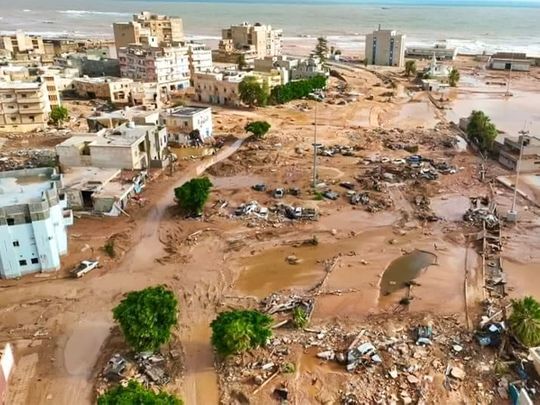
A global effort to assist stricken Libya gathered pace Thursday after a tsunami-like flood killed thousands of people and left thousands missing.
In addition, tens of thousands of people have been displaced after the huge flash flood slammed into the Mediterranean coastal city of Derna on Sunday. Witnesses compared it to a tsunami after two upstream dams burst when torrential rains brought by Storm Daniel battered the region.
How did a storm suddenly overwhelm entire cities and cause such havoc?
Here’s a look at what caused the destruction.
What happened in Libya?
Powerful storm Daniel moved through the Mediterranean Sea last week, swamping Greece, Turkey and Bulgaria. It then made its way to Libya, where it battered the coast.
Heavy rain hit the eastern part of the country, dousing Shahhat, Al Bayda, Marj and other settlements and displacing more than 20,000 people.
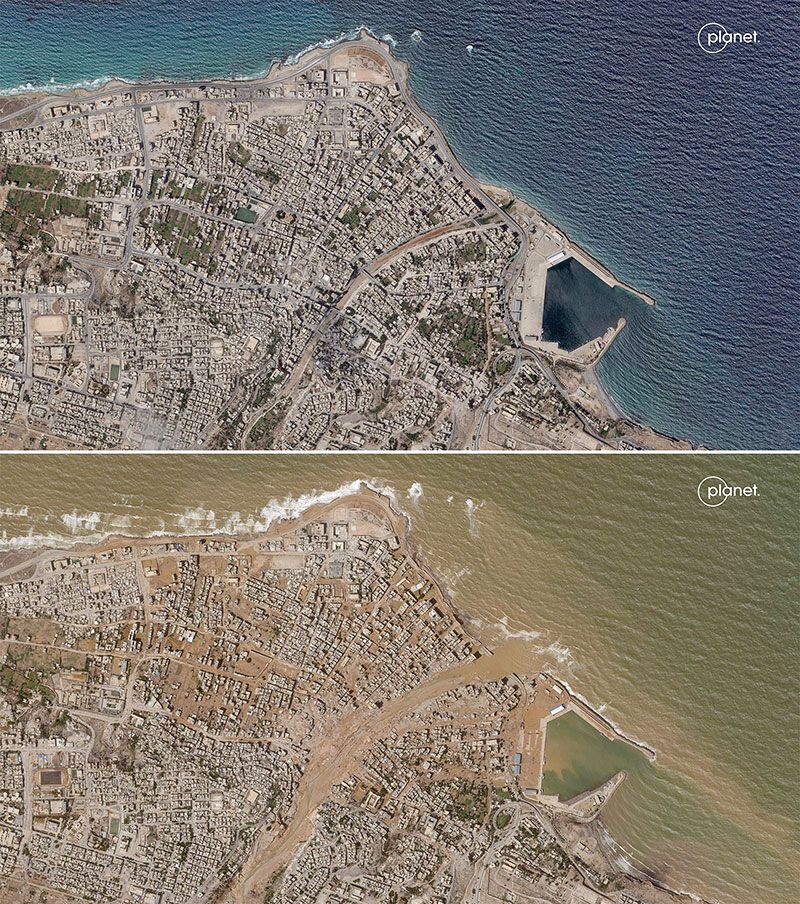
The rain dumped by the storm filled a normally dry riverbed, or wadi, in the hills south of Derna.
The pressure was too much for two dams built to protect Derna from floods. The resulting floods destroyed buildings, sank vehicles and left bodies strewn in the streets.
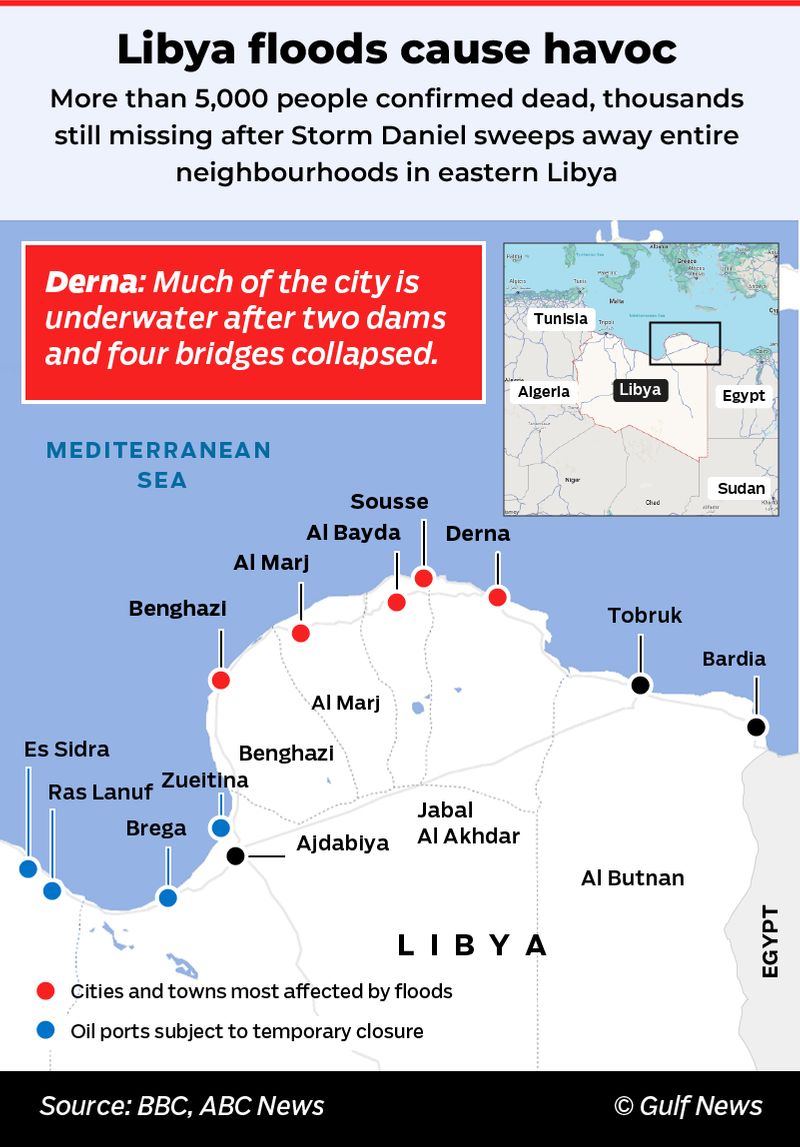
How bad is the damage?
Large parts of Derna have been wiped out. At least 30,000 people have been displaced, according to the UN migration agency.
Much of the city is covered in mud.
Infrastructure including the city’s bridges have been destroyed.
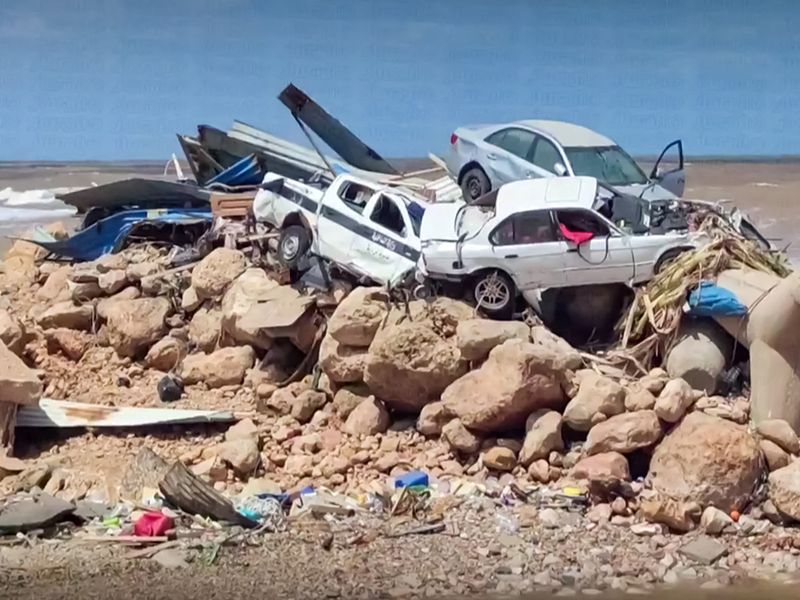
The flood uprooted trees and wrecked hundreds of cars, many flipped on their sides or their roofs.
Power and water supplies were severed after the flood. The UN Office for the Coordination of Humanitarian Affairs (OCHA) reported on Wednesday that electricity had been partially restored along with internet services.
What is a Medicane storm?
Mediterranean tropical-like cyclone, or more commonly known as ‘Medicane’ (an amalgamation of ‘Mediterranean’ and ‘hurricane’), is a rare super-storm that has the defining traits of a tropical cyclone.
How do they form?
Tropical storms typically form over warmer sea surface climates (above 26 degree Celsius) but Medicanes form even over lower temperatures. As they form over low pressure and low temperature areas, or troughs, that clash with the more tepid climate of the Mediterranean, instability arises. This gives birth to a Medicane – a harrowing storm of volatile properties.
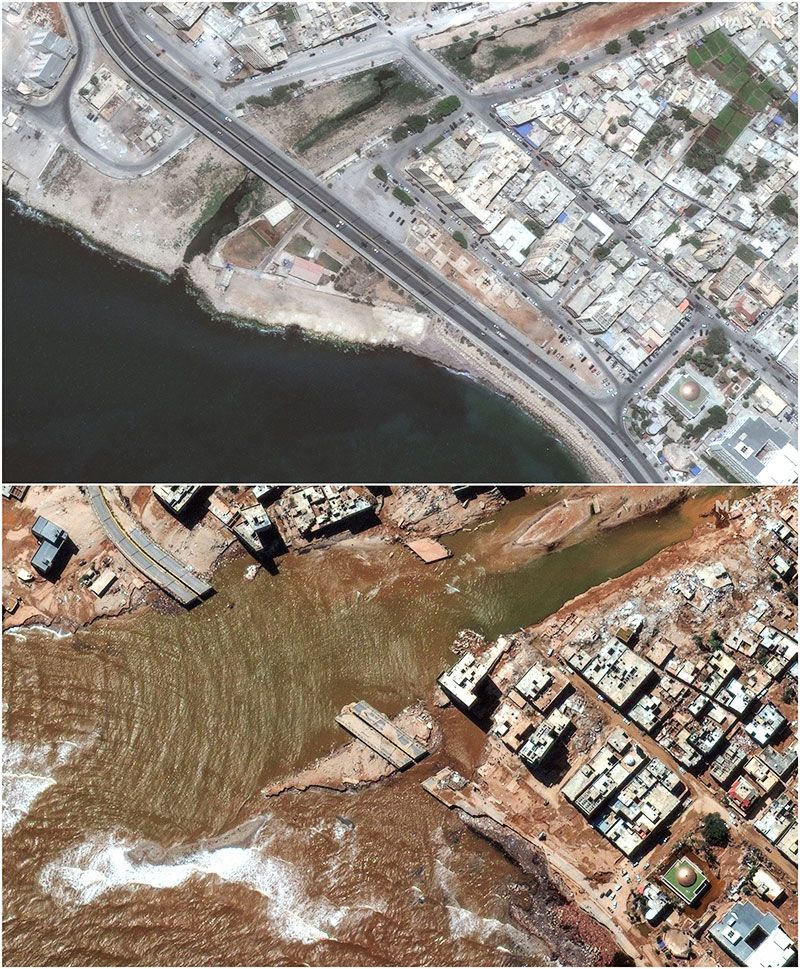
Which areas are more prone to Medicanes?
Two areas have been observed to have frequent Medicanes – the Ionian Sea and the Balearic Islands – due to their environmental and atmospheric properties. As the Mediterranean Sea is bounded by coastal constraints, the dimension of these storms can reach up to 300 to 400 km. This is particularly dangerous as the coasts surrounding the Mediterranean are densely populated.
What are some similar Medicane occurrences?
The Medicane of September 2020, dubbed Storm Ianos, was a perilous super-storm that wreaked havoc on the eastern Mediterranean, namely Greece and its Ionian Islands. About 75kmph winds raging through the region and extreme precipitation claimed three lives and caused more than $100 million worth of damages.
How many people are dead or missing in Libya?
Officials have given differing numbers of dead and missing, but all are in the thousands. In one of the largest tolls cited so far, Mayor Abdulmenam Ghaithi told a broadcaster there could be 18,000 to 20,000 dead, based on the number of districts hit.
Health officials have confirmed more than 5,000 deaths and say 9,000 people are still missing.
The International Federation of the Red Cross and Red Crescent Societies (IFRC) said on Tuesday around 10,000 people were thought to be missing.

Was the high death toll avoidable?
The United Nations said Thursday that most of the thousands of deaths in Libya’s flood disaster could have been averted if early warning and emergency management systems had functioned properly.
Petteri Taalas, head of the UN World Meteorological Organisation, said better coordination could have resulted in warning the people early, thus enabling the emergency management forced to carry out the evacuation of the people.
Taalas said lacking weather forecasting and dissemination and action on early warnings was a large contributor to the size of the disaster.
The years-long internal conflict in the country meant its meteorological “observing network has been very much destroyed, the IT systems have been destroyed”, he said.
“The flooding events came and there was no evacuation taking place, because there was not the proper early warning systems in place.”
If evacuations had taken place, the human toll would have been far lower, he said.
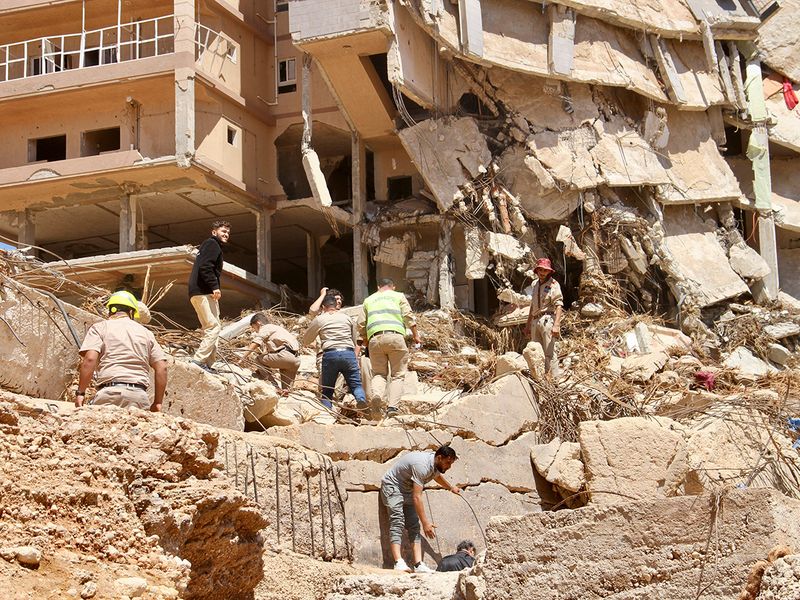
Why was Libya so heavily affected by Storm Daniel?
A number of factors made Libya susceptible to the detrimental impact of Storm Daniel. Libya’s geographical location puts the country to the south of the Mediterranean Sea. The long-lasting climate crisis has raised temperatures in the Mediterranean, making storms like the “Medicanes” more sizeable, devastating and recurring.
Secondly, the response and rescue after the flash floods was delayed.
Furthermore, due to years of political unrest within the country, Libya’s infrastructure has been rendered weak, particularly in places like Wadi Derna. Most of the architecture of Libya has crumbling frames and eroding bases, an undesirable state of infrastructure against super-storms like this one.
Unstable architecture is especially seen in the dams based in the outskirts of the city of Derna, which burst during the storm and wiped out more than half the population of the city. Prior reports have shown that the dams were becoming increasingly vulnerable to breaking during the last few floods since 1942 that have raged through Libya.
What do we know about the two dams that collapsed?
Derna and Mansour, the two dams lying on the borders of the city of Wadi Derna, collapsed during the torrential rainfall of Storm Daniel. Derna, measuring 75 meters and enclosing 18 million cubic meters of water, and Mansour at a height of 45 meters with a capacity limit of 1.5 million cubic meters, were constructed approximately half a century ago.
France24.com quotes Abdelwanees A. R. Ashoor, a hydrologist from the Omar al-Mukhtar University, from his 2022 research paper into the dams on how multiple floods since 1942 have weathered down the architecture of the Wadi Derna dams.
“The results show that the area of the dams is at high risk of flooding,” Ashoor warns. “Immediate action into routine maintenance is necessary to mitigate the risks of a flood with devastating consequences on the city and its people.”
- Sampurna Dutta is an intern at Gulf News / with inputs from agencies








